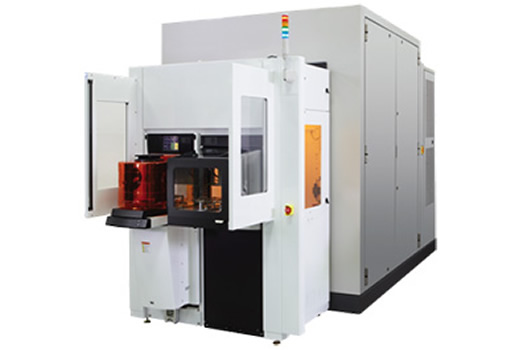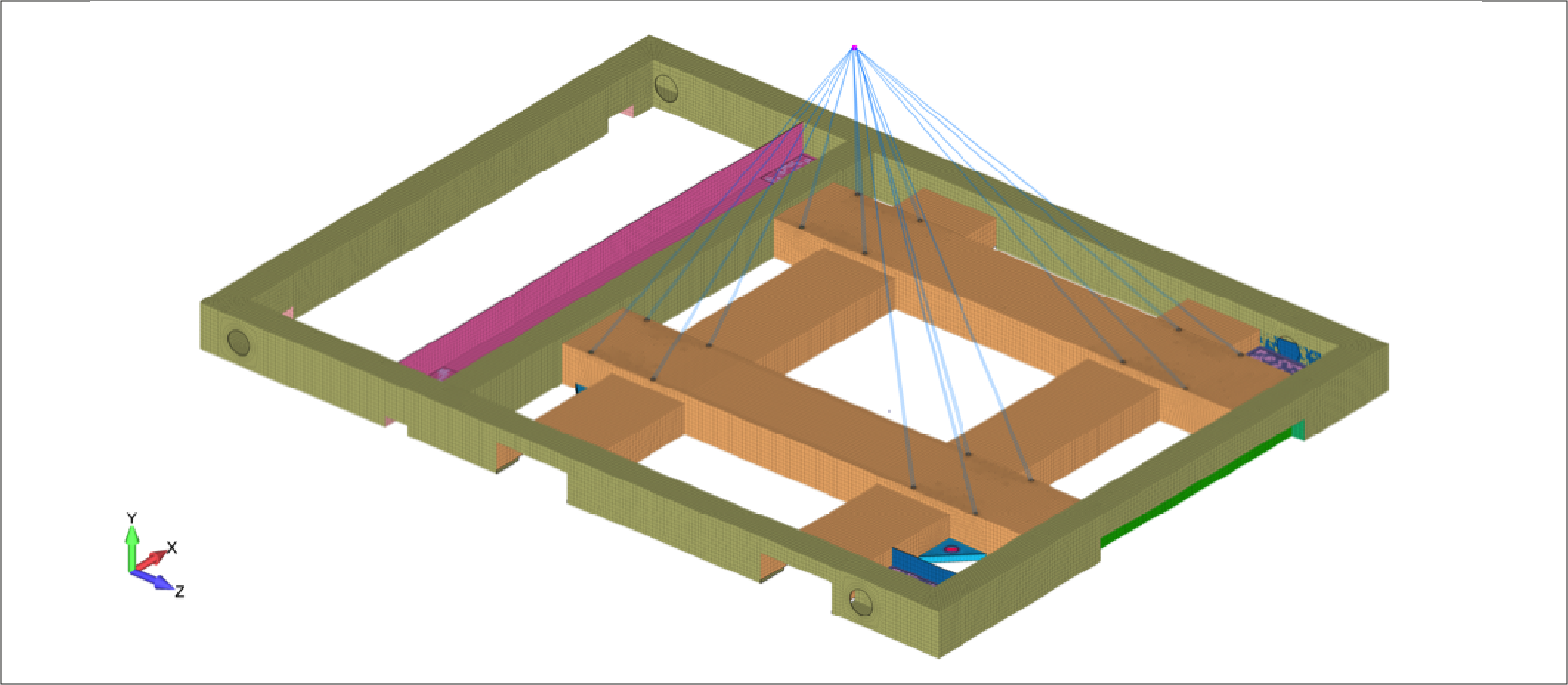Seismic Analysis of Stationary Mechanical Equipment

Analysis
Objective
A seismic study of the base frame for a 20,000 lb electron microscope (see Figure 1) was performed to ensure that the structure would meet ASCE 7 (American Society of Civil Engineers) and IBU (International Building Code) seismic standards. This structure was evaluated using the equivalent lateral force procedure where a lateral acceleration was applied in each direction (+X, -X, +Z, -Z). Stress in the structure and forces in the anchors were then evaluated to ensure compliance.
Section 1: LINEAR ELASTIC ANALYSIS WITH Simcenter NASTRAN
A seismic study of the base frame for a 20,000 lb electron microscope (see Figure 1) was performed to ensure that the structure would meet ASCE 7 (American Society of Civil Engineers) and IBU (International Building Code) seismic standards. This structure was evaluated using the equivalent lateral force procedure where a lateral acceleration was applied in each direction (+X, -X, +Z, -Z). Stress in the structure and forces in the anchors were then evaluated to ensure compliance.
The finite element model was built using a combination of plate elements, beam elements, and solid hexahedral elements. This combination yielded an efficient, flexible model with additional detail in the anchor flanges (see Figure 2 and Figure 3). Boundary conditions were adjusted for each acceleration direction to reflect the most conservative conditions for each load (see Figure 4).
Checking the structure for seismic compliance was straight-forward, all stresses were below yield for the material. The shear and axial loads in the anchor bolts were checked to ensure that the client’s specified fasteners and concrete anchors would be able to handle the load.
With Predictive Engineering’s analysis, the client was able to install their equipment with confidence that it would be safe in the event of an earthquake.
Section 2: NONLINEAR ANALYSIS WITH LS-DYNA
The aforementioned structure is mounted to a floating platform with brackets to restrain excessive movement in case of a seismic event (see Figure 7). With a suspended weight of over 25,000 lbs, it was obvious that the steel brackets would have significant plastic deformation before bringing the structure to a halt. In order to handle this large plastic deformation the brackets were meshed in FEMAP using hexahedral and beam elements (see Figure 9) and analyzed using LS-DYNA (see Figure 10). ASCE and IBC do not provide strict guidelines for brackets like these, so we were left to use our engineering judgement on how to best qualify them.
We decided that if stresses in any portion of the bracket reached the tensile strength or the material, it would be considered a failure. The safety factor was calculated by comparing the load needed to reach failure against the calculated seismic load. In addition to the bracket, the fasteners connecting the bracket to the ground below were checked to ensure they could handle the load. In the end, Predictive Engineering’s analysis was able to ensure the client that their brackets were sufficient to handle the load, and quantify the factor of safety in their design.










